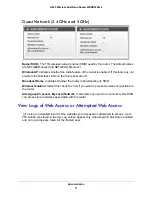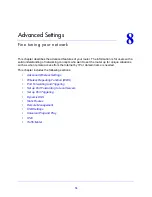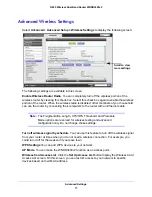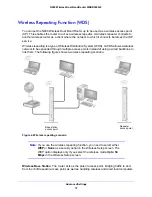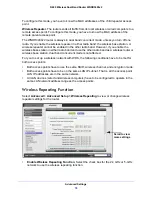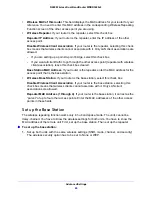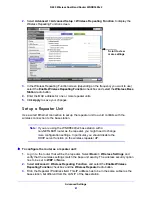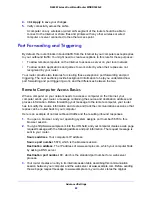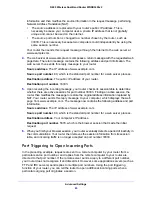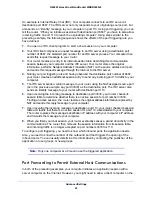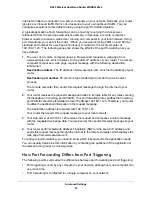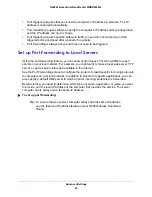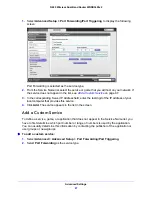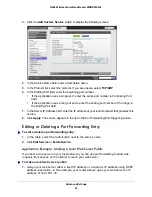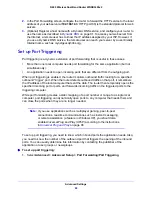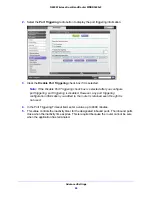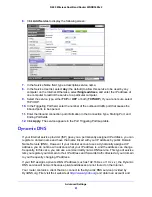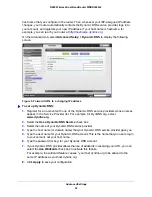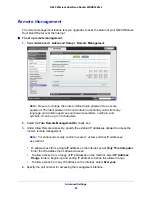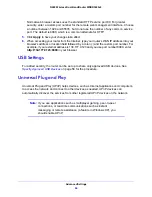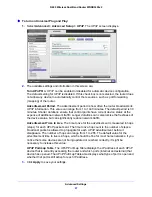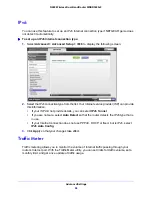
Advanced Settings
83
N600 Wireless Dual Band Router WNDR3400v2
information and then modifies the source information in the request message, performing
Network Address Translation (NAT):
•
The source address is replaced with your router’s public IP address. This is
necessary because your computer uses a private IP address that is not globally
unique and cannot be used on the Internet.
•
The source port number is changed to a number chosen by the router, such as
33333. This is necessary because two computers could independently be using the
same session number.
Your router then sends this request message through the Internet to the web server at
www.example.com.
4.
The web server at www.example.com composes a return message with the requested web
page data. The return message contains the following address and port information. The
web server then sends this reply message to your router.
Source address
. The IP address of www.example.com.
Source port number
. 80, which is the standard port number for a web server process.
Destination address
. The public IP address of your router.
Destination port number
. 33333.
5.
Upon receiving the incoming message, your router checks its session table to determine
whether there are active sessions for port number 33333. Finding an active session, the
router then modifies the message to restore the original address information replaced by
NAT. Your router sends this reply message to your computer, which displays the web
page from www.example.com. The message now contains the following address and port
information.
Source address
. The IP address of www.example.com.
Source port number
. 80, which is the standard port number for a web server process.
Destination address
. Your computer’s IP address.
Destination port number
. 5678, which is the browser session that made the initial
request.
6.
When you finish your browser session, your router eventually detects a period of inactivity in
the communications. Your router then removes the session information from its session
table, and incoming traffic is no longer accepted on port number 33333.
Port Triggering to Open Incoming Ports
In the preceding example, requests are sent to a remote computer by your router from a
particular service port number, and replies from the remote computer to your router are
directed to that port number. If the remote server sends a reply to a different port number,
your router does not recognize it and discards it. However, some application servers (such as
FTP and IRC servers) send replies to multiple port numbers. Using the port triggering
function of your router, you can tell the router to open additional incoming ports when a
particular outgoing port originates a session.



